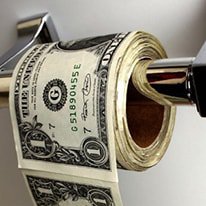-- Published: Thursday, 16 April 2020 | Print | Disqus
By Stefan Gleason
The metals markets are being pulled in multiple directions simultaneously like never before. The global virus-triggered economic freeze has caused industrial demand for all commodities to crater.
At the same time, mining output is also crashing as virus fears force many mines around the world to suspend operations.
What is the “right” equilibrium price for copper, silver, gold, and other metals in an environment of such extreme and unstable supply and demand stresses? The verdict of the market changes – often dramatically – day by day.
In March, hard assets tumbled along with stocks as investors priced in increasingly dire scenarios for the economy. A double-digit contraction in U.S. GDP and double-digit spike in unemployment became inevitable after economic lockdowns spread across the country.
Now hopes are growing for the economy being able to start reopening in May and reverse some of the damage done by the draconian policies prescribed Dr. Fauci and adopted by most state governors.
Still unknowable, however, is how quickly the economy will be able to heal itself… and to what extent demand for raw materials will recover toward pre-virus levels.
The biggest wild card in all this may be the effects of unprecedented fiscal and monetary stimulus.

Already the federal budget deficit is set to explode to an all-time record over $3 trillion (likely closer to $4 trillion) and represent a greater share of the U.S. economy than at any time since World War II. Already the Federal Reserve’s balance sheet has ballooned to $6.1 trillion as central bankers furiously try to prop up everything from mortgages to junk bonds.
All this is leading toward a devaluation of the U.S. dollar. That should naturally make sound money – gold and silver – more valuable in dollar terms.
However, as we saw last month, demand destruction amidst a wrecked economy pull down precious metals prices quite suddenly – if only temporarily. Gold has since rebounded strongly to a new 8-year high while silver is regaining its footing from historically depressed levels.
Drilling Down into Supply and Demand Fundamentals
The Silver Institute had forecasted in early February – back when the economic impact of the virus was thought to be minimal outside of China – that global silver demand would rise by 3% in 2020. The Institute projected supply would nearly keep pace with 2% growth (which would be the first annual increase in five years).
Those forecasts now have to be thrown out the window. Both demand and supply are set to plummet in the near term.
On the plus side, investment demand for silver bullion products spiked last month to levels dealers had never seen before, clearing out inventories of most coins, rounds, and bars.
Bullion buying has receded from the frantic pace seen at the peak of the panic but remains strong. Safe-haven buying could remain a feature of investor psychology for many months ahead until an effective COVID-19 vaccine is widely available – and that figures to be 12-18 months out.
As for mining supply, it’s going to be a long road ahead before mines are fully operational again. Platinum and palladium production is largely offline in South Africa. Mexico’s giant Peñasquito mine, one of the country’s leading sources of gold and silver, suspended operations on Monday.
The silver supply picture is complicated by the fact that few primary silver mines exist. Most silver is produced as a byproduct of mining other metals (copper, lead, zinc, gold).
Base metals producers are shutting down. As Reuters reported, “Copper prices advanced on Tuesday, with London copper touching a four-week high, as more virus-related mining disruptions in key producing countries sparked global supply concerns.”
Best-Case and Worst-Case Scenarios
Given the extreme dynamics setting up in supply, demand, and monetary expansionism, market conditions are likely to remain volatile. We do think we have seen “peak fear” in this cycle – but not the end of uncertainty surrounding the virus and the economic damage it could continue to inflict.
In a best-case scenario, COVID-19’s spread steadily declines into the summer and the economy embarks on a V-shaped recovery. In a worst-case scenario, the virus makes a devastating resurgence in the fall, the economy locks down all over again, and markets descend back into chaos.
If the optimistic outlook prevails, then rising industrial demand for copper, silver, platinum, and palladium can be expected to drive those metals higher. Demand can recover faster than supply, which can’t simply be turned back on like a switch.
If the pessimists prevail, then all bets are off. Rounds of asset deflation will lead to accelerating hyperinflationary monetary responses. Social chaos, martial law, and possibly a postponement of elections could result.
In such a scenario, no investment could be counted on to perform well. But gold, the ultimate money, can always be counted on retain value even during the worst of times.
Stefan Gleason is President of Money Metals Exchange, the national precious metals company named 2015 "Dealer of the Year" in the United States by an independent global ratings group. A graduate of the University of Florida, Gleason is a seasoned business leader, investor, political strategist, and grassroots activist. Gleason has frequently appeared on national television networks such as CNN, FoxNews, and CNBC, and his writings have appeared in hundreds of publications such as the Wall Street Journal, Detroit News, Washington Times, and National Review.
| Digg This Article
-- Published: Thursday, 16 April 2020 | E-Mail | Print | Source: GoldSeek.com

